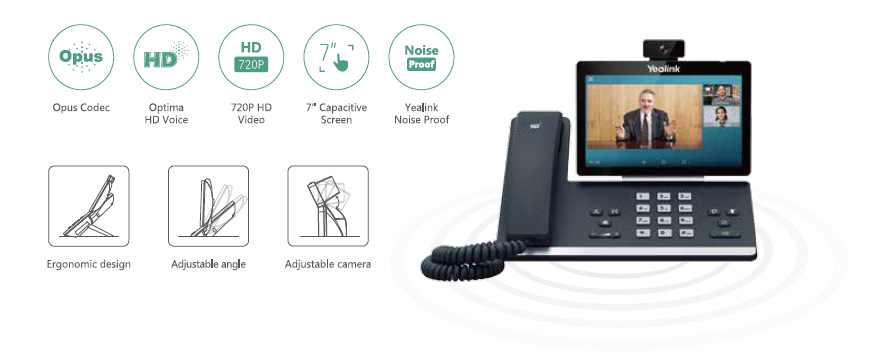Introduction
In today's rapidly evolving technological landscape, the integration of artificial intelligence (AI) into business processes has become more than just a trend; it's a necessity. For small and medium-sized enterprises (SMEs), staying competitive means adopting innovative solutions that streamline operations and enhance customer experiences. One of the most significant areas where AI is making its mark is in business phone systems. This article will delve deep into how these innovations are shaping the future of communication for SMEs, ensuring they not only survive but thrive in an increasingly digital marketplace.
Table of Contents
The Future is Now: AI Innovations in Business Phone Systems for SMEs- 1.1 What are Business Phone Systems? 1.2 Evolution of Business Phone Systems
- 2.1 What is Artificial Intelligence? 2.2 How AI Enhances Communication
- 3.1 Intelligent Call Routing 3.2 Voice Recognition and Natural Language Processing 3.3 AI-Powered Analytics
- 4.1 Improved Customer Experience 4.2 Cost Efficiency for SMEs
- 6.1 Factors to Consider
The Future is Now: AI Innovations in Business Phone Systems for SMEs
The demand for efficient communication tools has never been greater, especially among SMEs looking to maximize their operational potential while minimizing costs. The future is indeed now, as businesses explore how to harness the power of artificial intelligence to transform traditional business phone systems into robust platforms capable of providing enhanced functionality, automation, and analytics.
What are Business Phone Systems?
Business phone systems refer to telecommunications solutions designed specifically for organizations to handle calls efficiently and effectively within their operations while facilitating communication with clients and stakeholders outside the organization.
Types of Business Phone Systems:
- Traditional Landline Phones: Basic systems using copper wiring. VoIP (Voice over Internet Protocol): Enables calls over the internet. Cloud-Based Solutions: Offer flexibility and scalability without physical hardware.
Evolution of Business Phone Systems
From rotary dial telephones to sophisticated VoIP systems, business phone technology has undergone radical changes over the decades.
Key Milestones:
- The introduction of PBX (Private Branch Exchange) allowed businesses to manage multiple lines. The shift from analog to digital technology enhanced call quality and security. Integration with mobile technologies paved the way for remote work capabilities.
Understanding AI in Communication
What is Artificial Intelligence?
Artificial Intelligence encompasses various technologies that enable machines to perform tasks typically requiring human intelligence, such as learning, reasoning, problem-solving, perception, and language understanding.
How AI Enhances Communication
AI enhances communication by enabling natural interactions between users and machines through voice recognition software, chatbots, predictive analytics, and personalized communication strategies tailored to customer needs.
Key Features of AI-Driven Business Phone Systems

Intelligent Call Routing
AI algorithms analyze incoming calls based on various criteria—time of day, caller ID, or historical data—to route calls to the most appropriate department or individual.
Voice Recognition and Natural Language Processing
These features empower systems to understand spoken language accurately, allowing users to interact with their devices seamlessly without manual input.
AI-Powered Analytics
Data collected through communication channels helps businesses gain insights into customer behavior patterns that can inform marketing strategies or product development efforts.
Benefits of Implementing AI Innovations
Improved Customer Experience
With faster response times thanks to intelligent routing and advanced NLP capabilities, customers enjoy a seamless interaction experience that fosters loyalty.
Cost Efficiency for SMEs
By automating routine tasks like call answering or data entry through chatbots or virtual assistants, businesses can reduce labor costs while reallocating resources toward growth initiatives.
Case Studies: Success Stories with AI in Business Phone Systems Numerous SMEs have reported significant improvements after integrating advanced business phone systems equipped with artificial intelligence functionalities:
Example Case Study:
A retail company integrated an AI-driven phone system resulting in a 30% increase in customer satisfaction ratings due to improved response times and personalized service experiences.
Choosing the Right AI-Powered Business Phone System
Factors to Consider:
When selecting an appropriate solution for your enterprise's needs:
- Assess your current communication needs. Evaluate system scalability options. Research vendor reliability and support services available post-installation.
The Future Trends in Business Phone Systems with AI
Emerging trends point towards even deeper integrations between business phone systems and other operational tools such as CRM software ensuring a unified interface across all departments enhancing productivity levels further down the line.
Challenges and Solutions in Adopting AI Technologies
While implementing new technologies presents numerous advantages; it also brings challenges including:
Common Challenges:
- Resistance from employees accustomed to traditional methods. High initial investment costs associated with upgrading infrastructure.
Potential Solutions:
Providing comprehensive training programs can ease transitions while emphasizing long-term cost savings that come from streamlined processes may encourage broader acceptance among staff members skeptical VoIP Phone Service Los Angeles about change.
FAQs about AI Innovations in Business Phone Systems
What are some common features found in modern business phone systems?
- Modern systems typically include VoIP calling capabilities, call forwarding options, voicemail-to-email features, integrated video conferencing tools along with advanced analytics powered by artificial intelligence.*
How does natural language processing improve customer interactions?
- NLP allows chatbots or voice assistants to understand context better during conversations leading them towards providing accurate answers quickly enhancing overall user experience dramatically.*
Are there specific industries benefiting more from these advances?
- Yes! Industries like healthcare where timely responses can be critical see remarkable benefits along with retail sectors focusing on personalizing customer engagements through proactive outreach.*
What's the difference between cloud-based versus on-premise solutions?

- Cloud-based solutions require minimal IT management as they operate remotely; whereas on-premise setups necessitate maintaining servers internally which could involve higher ongoing maintenance expenses.*
Can small businesses afford these advanced technologies?
- Many providers offer scalable packages tailored specifically for smaller enterprises ensuring access without breaking budgets so affordability shouldn’t be a barrier anymore!*
How important is employee training when switching phone systems?
- Training plays a crucial role since familiarizing teams enables smooth transitions reducing downtime associated with adapting new workflows fostering productivity right away!*
Conclusion
As we stand at this intersection of technology and business communications—the future indeed feels bright! With advancements transforming traditional modes into smarter alternatives driven by powerful AIs—SMEs now have access not only tools that help them compete effectively but pave pathways toward innovative engagement strategies previously thought unattainable due limitations imposed upon legacy infrastructures alone!
Embracing these changes ensures that your enterprise remains agile enough not just adapt but thrive amid constant shifts occurring within today's markets—making sure you’re always ahead curve rather than lagging behind it!
Whether you’re considering implementing an updated system or simply wanting learn more about what’s available out there—remember this pivotal moment reflects how embracing innovation today sets stage success tomorrow!